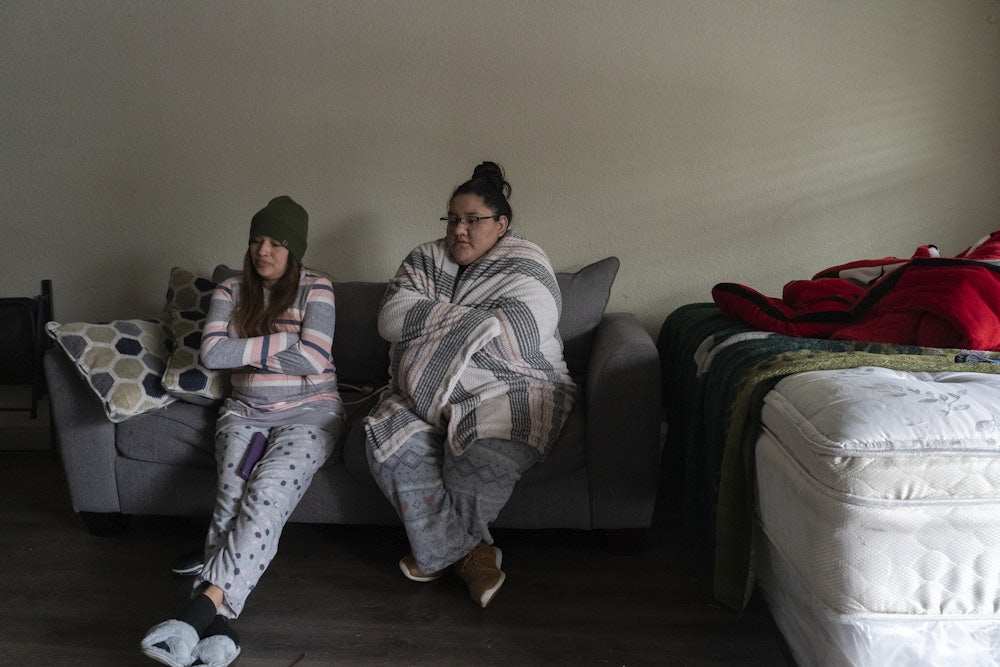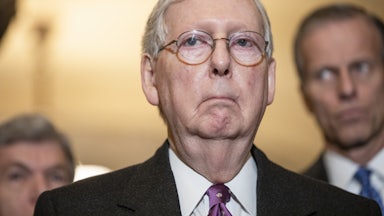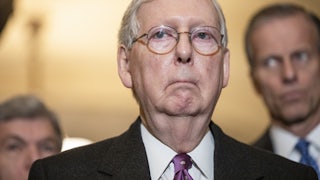In the wake of the winter storm that decimated Texas’s energy infrastructure and left millions without power or water, the predictable storylines have come and gone one by one: There was the early attempt by conservatives to shift the blame from the state’s privatized, largely fossil fueled grid to renewables. Then there was the Cruz family’s one-day escapade to Cancun. And now we have arrived at the price-gouging bit.
On Saturday, The New York Times interviewed Scott Willoughby, an Army vet in a Dallas suburb who had to drain his personal savings to pay a $16,752 electric bill. Susan Hosford in Denison let the Associated Press take a look at the $1,346.17 bill that was compounded by her bank charging her overdraft fees. DeAndre Upshaw shared with CNN that he’s been struggling to focus after receiving a $7,000 utility fee for his Dallas home. What’s happening is outrageous and absolutely demoralizing for people just now able to turn on their water faucets. But it’s also par for the course when it comes to disaster pricing in the United States. What we have to contend with now is the fact that as these disasters become more commonplace and more destructive, so, too, will be the attempts at profiteering off human suffering.
Emergency price-gouging is an age-old American business tradition, one that the entire nation experienced earlier this year when a single box of Lysol wipes suddenly cost as much as a prix-fixe Michelin dinner. What the insane Texas utility rates prove—in addition to the futility of expecting the market to show compassion—is that the people tasked with building vital infrastructure quite simply do not give a shit about these outcomes beyond scoring them as a success according to Milton Friedman. Speaking with the Times, the architect of the Texas energy market strategy, William Hogan, implied that the system “has functioned as it was designed,” telling the paper that the basic underlying principle—high prices designed to discourage continuous use—is, in fact, a good thing. “It’s not convenient,” Hogan said. “It’s not nice. It’s necessary.” (On that front, read my colleague Kate Aronoff’s piece on the policies that cemented this catastrophe. Neither freezing nor bankrupting people was, in fact, necessary.)
Texas’s system virtually guaranteed that one day, its residents would be in a place where they had to choose between getting their homes above freezing or dedicating next month’s rent to that brief warmth. Industry players like Griddy (the company Hosford, for example, pays her energy bill through) have adopted a wholesale model—which means that the price of heating one’s home is tied to the supply-and-demand rates set by the distributors—as opposed to a fixed-price model, wherein customers might be responsible for a higher set payment but don’t have to worry about their bills bankrupting them. That Griddy is allowed to present this option to people who may not realize its consequences is, of course, a matter of regulation.
Both Texas and the other grid systems in the U.S. have clear ways out of this mess. But the path is partially obscured by the fact that options such as nationalizing energy generation or even shifting toward a regional model of publicly owned and maintained utility companies is a political nonstarter for too many in Congress. This remains the case despite the overwhelming need for transparency and an energy infrastructure that is accountable to all of its stakeholders, not just the ones getting rich off it. And it remains the case, despite the overwhelming need to intervene in energy markets to transition quickly off fossil fuels. This is why Texas Republicans are mostly talking about having the feds cover people’s energy bills this one time rather than reforming the system as a whole.
Some states, especially those that experience wildfire and hurricane emergencies on an annual basis, have already moved to legislate against price-gouging in the disasters to come. In California, state law is in place to block excessive pricing during declared emergencies, with items not allowed to be sold more than 10 percent above the original price. Due to the fact that Governor Gavin Newsom extended the wildfire emergency through the end of 2021, the Santa Monica attorney general’s office had the grounds to move forward with a lawsuit against a landlord who raised a tenant’s rent from $865 in February 2020 to $2,336 in March and then $3,000 for April and May. In addition to California, 35 other states already have a range of anti-price-gouging regulations in place. (It’s worth noting here that some economists believe price-gouging regulations inadvertently work against people with low incomes, as they keep the prices of goods low and allow for bulk buying of necessities by those with the means to do so.)
What these price-gouging responses lack is the ability to predict how various industries will seek to shore up their position as climate emergencies increase in frequency and severity. On Monday, it was reported that after years of record flooding in the Midwest, flood protection insurance rates through the National Flood Insurance Program will increase, after data by the First Street Foundation found that rates would need to quadruple in order to cover the true risks being faced by homes on the floodplains. These kinds of rate hikes, of course, can’t possibly hit a family on $20,000 a year and a billionaire with one of his five homes on a lakefront equally.
Whether it’s a winter freeze, wildfire, or flood, these crises exacerbate gaps that already feel horribly unjust: Those who can least afford to weather an emergency are asked to bear its greatest costs. Tribal nations, already staring at a funding deficit, are regularly left without aid from the Federal Emergency Management Agency in the case of an emergency. Latinx farmworkers are required to work in fields blanketed by wildfire haze without proper labor protections. Black communities still grappling with a pandemic that’s exposed the existing inequities of the health care system were suddenly tasked with trying to find warmth as Texas cut the lights out.
It’s impossible to look at the deliberate and entirely legal price-gouging of utility bills in Texas and not consider it a broader harbinger of our climate crisis’s potential future. Average citizens will be bled dry by the routine dismissal of science, and at-risk communities will be designated a necessary sacrifice. If another version of this story comes to pass with the next climate emergency, more stories like those of Willoughby, Upshaw, and Hosford will be published in national outlets about egregious market manipulations. And right below their stories of strife and systemic indifference, you can expect a quote from a professor or politician reminding you that what most people would call an outrage is what the supply-and-demand zealots call “efficient.”








